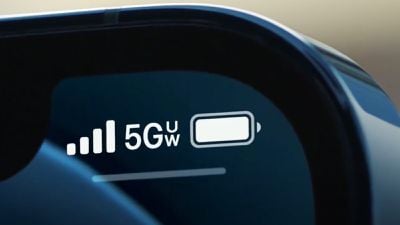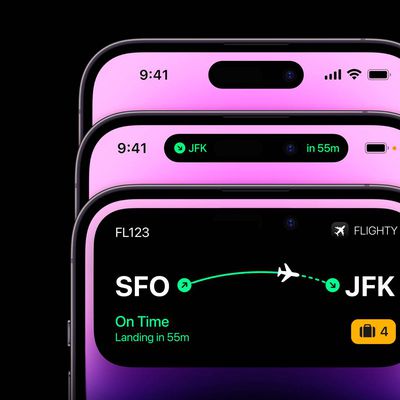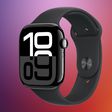AT&T and Verizon Delay 5G Expansion to Address Aircraft Interference Concerns
AT&T and Verizon are delaying the rollout of a new 5G band in order to address concerns about interference with aircraft safety systems, reports The Wall Street Journal.

The two companies were set to launch C-Band spectrum on December 5. The C-band covers radio frequencies between 3.7GHz and 4.2GHz, and it is key for the expansion of 5G networks. AT&T and Verizon are now working with the Federal Aviation Administration to ensure there will be no interference, delaying the 5G deployment until January 5.
On Tuesday, the Federal Aviation Administration issued a warning [PDF] about potential 5G interference with radar altimeters, technology used measure a plane's distance from the ground. In the document, the FAA confirms that there have not been "proven reports" about equipment interference in countries where the spectrum is already available, but the agency still has concerns.
The FAA is asking radio altimeter manufacturers to submit equipment details on devices that are used in airplanes, and it has suggested that companies who produce radio altimeters do detailed testing to determine if the hardware is susceptible to interference from C-band spectrum. Aircraft manufacturers have been asked to submit data on the radio altimeters that are in use and to do their own interference testing.
The CTIA, a trade group representing the wireless industry, has said that C-band spectrum can be safely used without causing interference to aviation equipment, but aviation groups have said that the 5G expansion could result in "major disruptions to passenger air travel, commercial transport, and critical helicopter operations."
AT&T spokesperson Margeret Boles said in a statement that AT&T plans to work with the FCC and FAA to understand the interference concerns. "It is critical that these discussions be informed by the science and the data," she said. "That is the only path to enabling experts and engineers to assess whether any legitimate coexistence issues exist."
Popular Stories
Since the iPhone X in 2017, all of Apple's highest-end iPhone models have featured either stainless steel or titanium frames, but it has now been rumored that this design decision will be coming to an end with the iPhone 17 Pro models later this year.
In a post on Chinese social media platform Weibo today, the account Instant Digital said that the iPhone 17 Pro models will have an aluminum...
Apple should unveil the iPhone 17 series in September, and there might be one bigger difference between the Pro and Pro Max models this year.
As always, the Pro Max model will be larger than the Pro model:iPhone 17 Pro: 6.3-inch display
iPhone 17 Pro Max: 6.9-inch displayGiven the Pro Max is physically larger than the Pro, it has more internal space, allowing for a larger battery and...
Apple is continuing to refine and update iOS 26, and beta three features smaller changes than we saw in beta 2, plus further tweaks to the Liquid Glass design. Apple is gearing up for the next phase of beta testing, and the company has promised that a public beta is set to come out in July.
Transparency
In some apps like Apple Music, Podcasts, and the App Store, Apple has toned down the...
The calendar has turned to July, meaning that 2025 is now more than half over. And while the summer months are often quiet for Apple, the company still has more than a dozen products coming later this year, according to rumors.
Below, we have outlined at least 15 new Apple products that are expected to launch later this year, along with key rumored features for each.
iPhone 17 Series
iPho...
In 2020, Apple added a digital car key feature to its Wallet app, allowing users to lock, unlock, and start a compatible vehicle with an iPhone or Apple Watch. The feature is currently offered by select automakers, including Audi, BMW, Hyundai, Kia, Genesis, Mercedes-Benz, Volvo, and a handful of others, and it is set to expand further.
Apple has a web page with a list of vehicle models that ...
Apple's next-generation iPhone 17 Pro and iPhone 17 Pro Max are just over two months away, and there are plenty of rumors about the devices.
Below, we recap key changes rumored for the iPhone 17 Pro models.
Latest Rumors
These rumors surfaced in June and July:Apple logo repositioned: Apple's logo may have a lower position on the back of the iPhone 17 Pro models, compared to previous...
New renders today provide the best look yet relocated Apple logo and redesigned MagSafe magnet array of the iPhone 17 Pro and iPhone 17 Pro Max.
Image via Majin Bu.
Several of the design changes coming to the iPhone 17 Pro model have been rumored for some time, such as the elongated camera bump that spans the full width of the device, with the LiDAR Scanner and flash moving to the right side.
...
iPhone 17 models will feature a redesigned Dynamic Island user interface, according to a post today from Digital Chat Station, an account with more than three million followers on Chinese social media platform Weibo. The account has accurately leaked some information regarding future Apple products in the past.
The account did not share any specific details about the alleged changes that are ...
Apple is expanding the ability to add an Apple Account Card to the Wallet app to more countries, according to backend Apple Pay changes.
With iOS 15.5, Apple updated the Wallet app to allow users to add an Apple Account Card, which displays the Apple credit balance associated with an Apple ID.
If you receive an Apple gift card, for example, it is added to an Apple Account that is also...























